| Home > RX-7 > My RX-7 > Project Tina > Project Tina, April 30th, 2010: TII Oil Pump and Transmission Installation, Catch Can, MOP Removal, Intercooler Improvements |
| Home > RX-7 > My RX-7 > Project Tina > Project Tina, April 30th, 2010: TII Oil Pump and Transmission Installation, Catch Can, MOP Removal, Intercooler Improvements |
Installing the catch can took only a few minutes. That little K&N breather filter was surprisingly expensive.
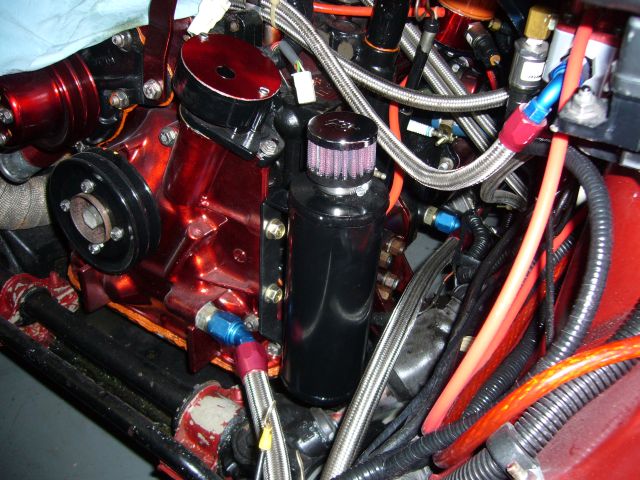
The feed nipple of the catch can connects to the nipple on the center iron at the oil filler. The nipple on the oil filler neck then connects to a vacuum port on the intake manifold through a check valve. Another check valve is inserted in the line from the center iron to the charcoal canister to prevent the center iron from blowing into the canister. This setup allows the crankcase to breath properly into the can when the car is under boost, but keeps the PCV system working when the car is under vacuum by drawing polluted air through the top nipple while fresh air fills the center iron via the bottom nipple and filter on the catch can.
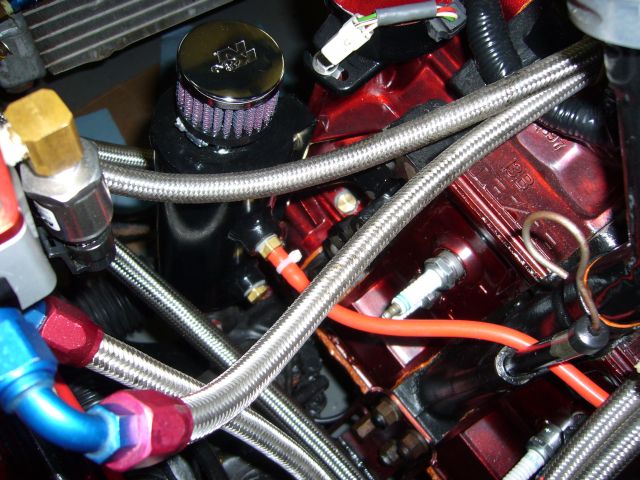
When the subframe and control arms returned from the blaster (the person doing the sand blasting was cursing my name when trying to remove the POR-15 from the bottom of the frame) I set about reinforcing the front differential mount. I've seen one of these break under power from a TII with a stock turbo, so it only made sense to take the time now to beef up the mount before it breaks later. The corners of the mount aren't welded from the factory which would seem to be a major weak point. I closed the gap between the mount and subframe with a hammer, and then laid down some welds to secure it. Look at that pretty heat-effected-zone.
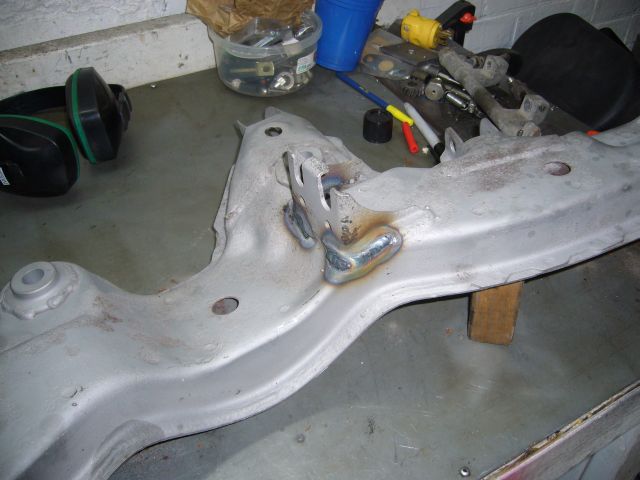
Two pieces of 1/8" plate were TIG welded to the outside of the mount, while the inner seam was simply MIG welded.
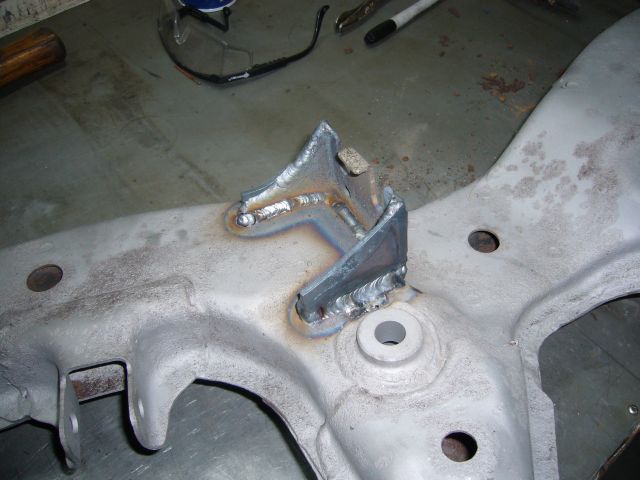
The freshly blasted control arms were degreased with Castrol Super Clean, etched by POR-15s MetalReady and then painted with two coats of silver POR-15. This is the first time I have used silver POR-15 and I must say that it is harder to use then the black I am used to. It coats thinner and is more prone to dripping. I used silver just for a bit of contrast but from now on I will stick with black. Black POR-15 also seems much stronger once cured.
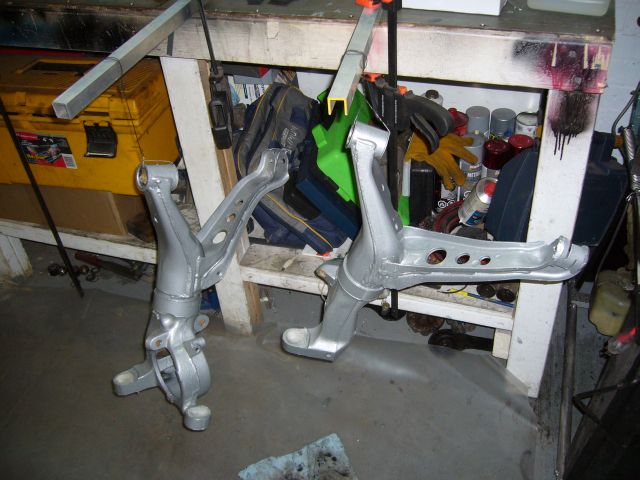
The subframe was also painted in POR-15, this time properly in black.
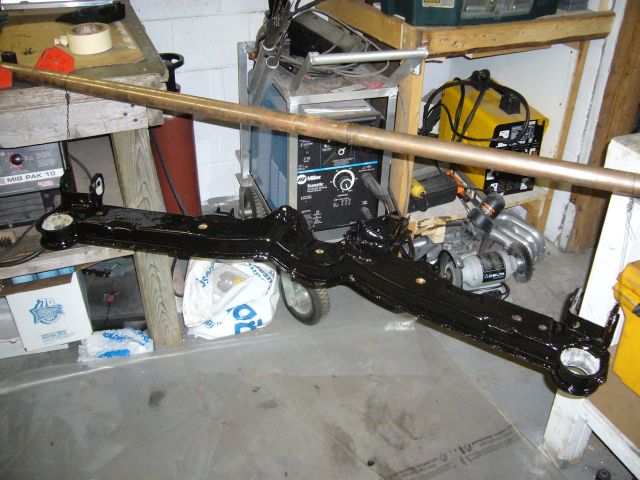
Giving the POR-15 a little time to cure, I assembled the -6 braided stainless water lines for the turbo and installed them onto the car.
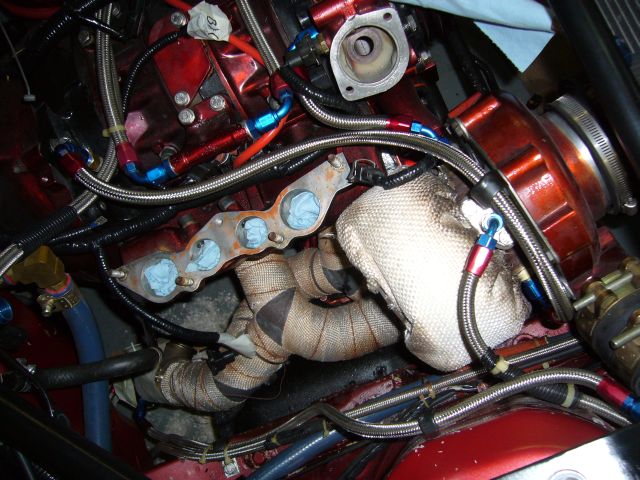
While I was painting stuff I also painted the sway bar and related hardware.
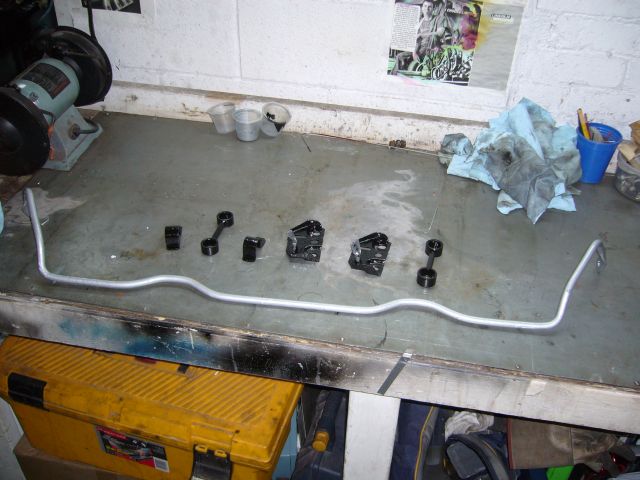
At this point I was waiting for my DTSS bushings to come from Mariah, so I figured I would correct another little annoyance with my previous work. Years ago when I modified the intercooler to change the orientation of the inlet and outlet pipes, I had only sporadic access to a TIG welder and very little practice actually using it. Consequently I tried to minimize the amount of modification done to the end tanks. While the modifications were functional (I can't complain about over 400HP at 13 PSI), they still sucked. The appearance of the intercooler bothered me every time I saw it and I didn't even want to think about mow much the hastily modified end tanks were hurting potential flow. The first step in fixing this mess was to make a set of jigs to locate the inlet and outlet pipes. I just grabbed some scrap metal from around the shop and welded up some simple bracing.
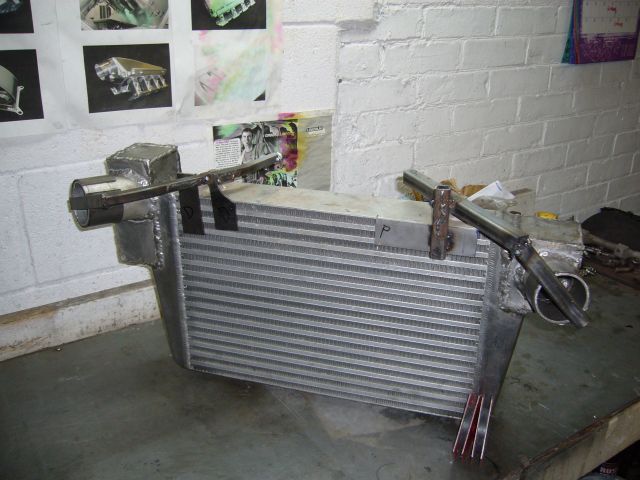
The next step was to cut off the previously added junk. I can't believe that there was a time when I actually welded that poorly. Then again, those tank modifications were made literally just after TIG welded aluminum for the first time.
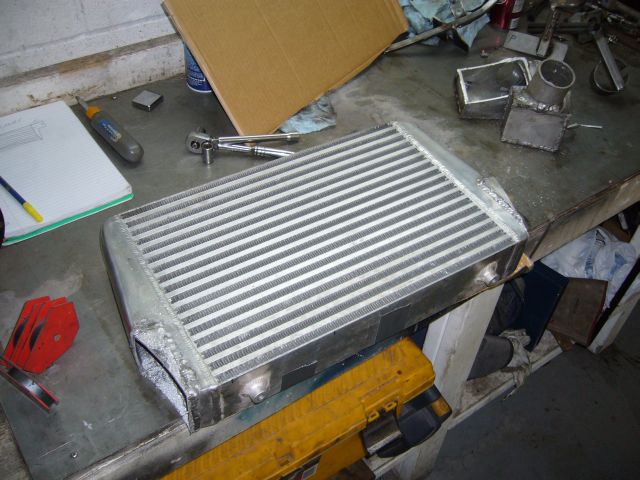
Next I ran the whole intercooler core through the band saw to cut off what remained of the factory cast end tanks.
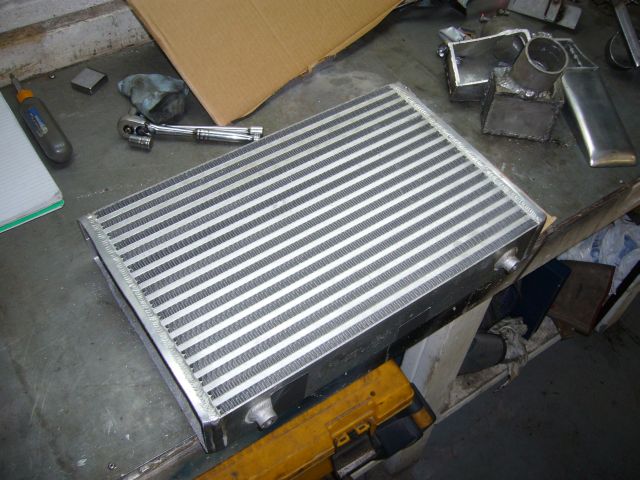
After eyeballing the correct measurements based on the location of the inlet/outlet pipe jig, I cut the outer shell of the new end tank out of 1/8" aluminum and tacked it into place. From memory, the bottom is an inch long and the top is 4 inches. This significantly increases the size of the tank and also moves the bottom out from the core quite a lot.
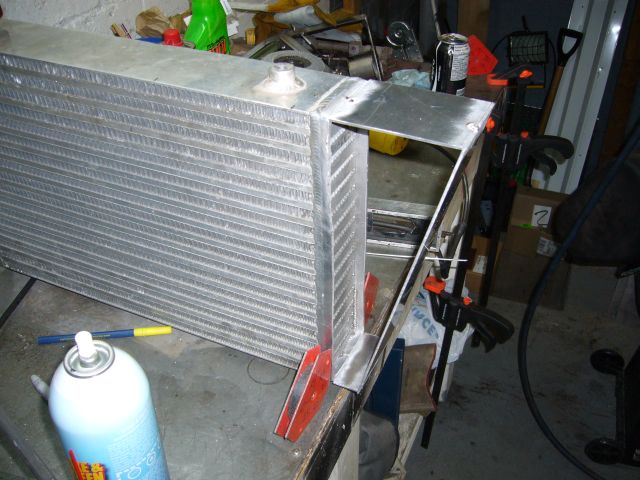
I made the back of the tank by tracing the pattern out of cardboard, trimming to fit, and then transferring it to aluminum. It was then tacked into place, with the last tack accidentally getting a fairly good helping of tungsten as well.
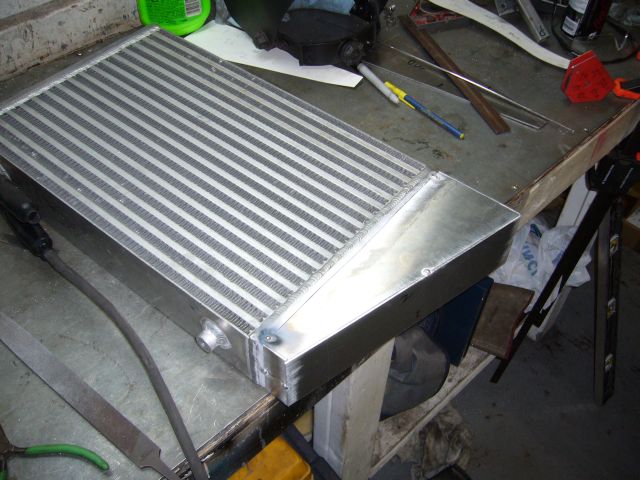
The jig was then used to measure the inlet pipe, which is made of 2.5" aluminum tubing. Here's a rare picture of me actually doing something. Normally I am on the other side of the camera but someone grabbed the camera while I was welding and decided to take a picture.
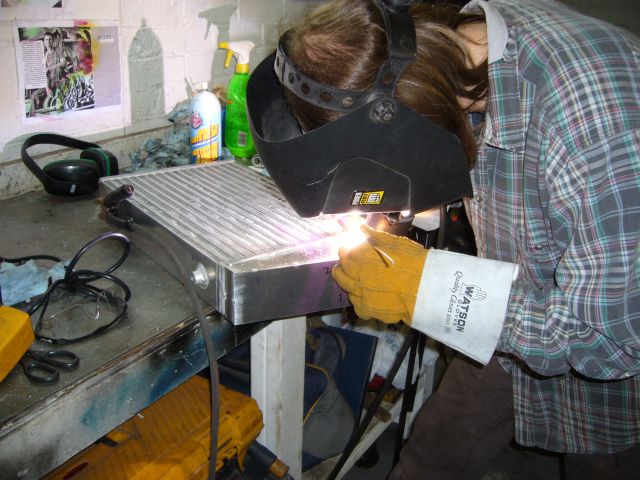
There were larger gaps then I had intended between the inlet tube and tank so it was a good thing the jig was there to stop the tubing from moving during tacking. I tacked alternating sides to help prevent movement as the welds cooled.
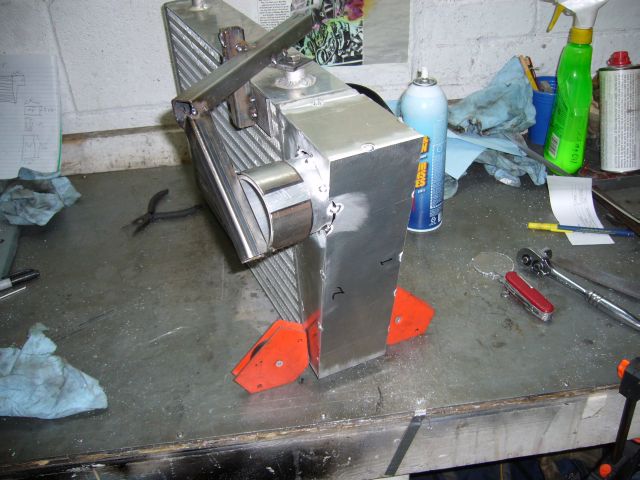
Once the tubing was tacked into place I closed up the other side. It was my goal to keep the sheet metal fitting as close as possible to avoid warping during final welding so I spent quite a bit of time with a file making everything fit. It ended up fitting well enough that only friction was required to hold it while tacking.
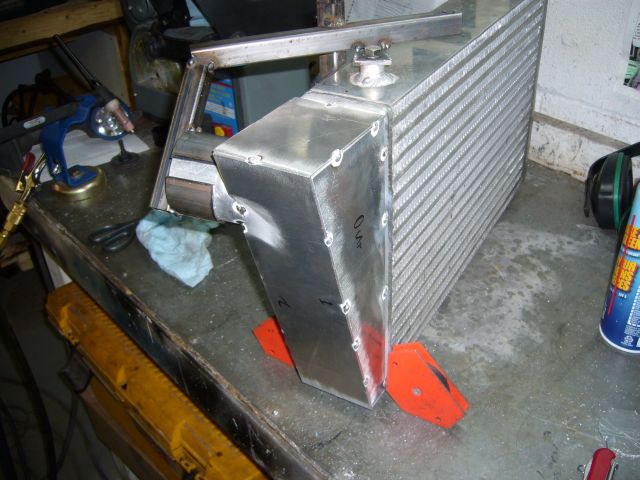
The other end tank was put together in the same way as the first. The only difference is that this one needed to be a bit higher due to the location of the outlet tube.
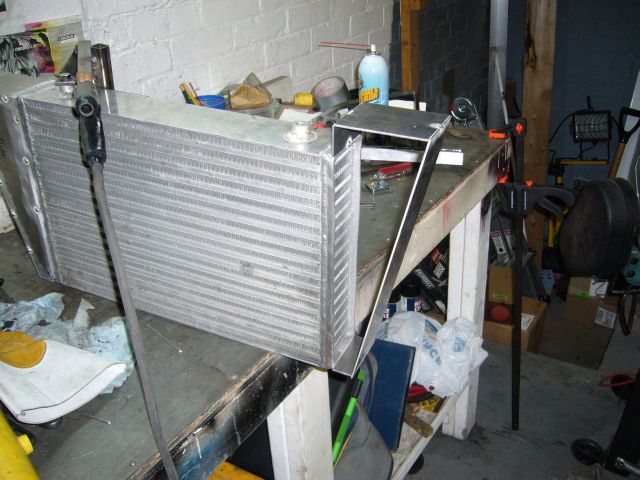
The jig was the used to locate the outlet tube. I purposely left a little bit of tubing on the inside of the end tank for a small "velocity stack" effect. Whether this will work or not, I don't know but I guess it was worth trying. With all the turbulent air already in an intercooler it can't hurt any.
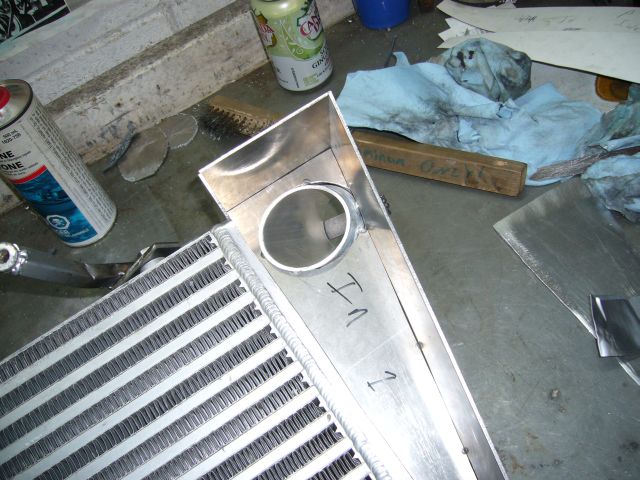
Another panel closed off the back of the drivers side tank and then the intercooler was ready to be fully welded.
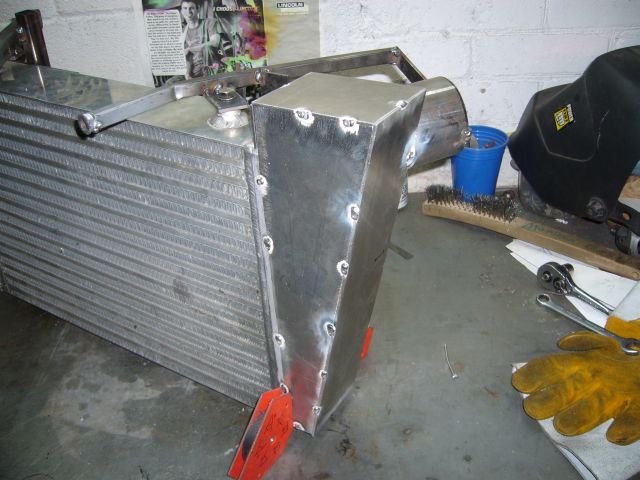
After about 2.5 hours behind the TIG torch this was the result. I must say I'm quite happy with how it came out and without question it is worlds better then what I started with. Notice that I welded little beads around the edges of the tube to make the beads which prevent the couplers from blowing off. After I took this picture I smoothed out those beads with a flap wheel, a file and sandpaper.
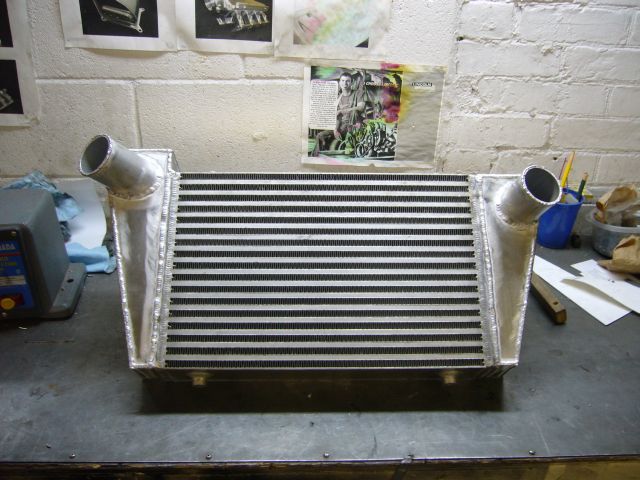
That was 60 pictures and I think time stop this update. I've been hard at work for a while and hope to have the rear suspension back in the car this weekend. When the rear suspension is done, I just have a few exhaust changes to make and then the front bearings and bushings to replace before the car is back on the road for the summer.
It's quite nice to be just making improvements to the car and taking care of simple maintenance items instead of building it. I would have liked to have had it out on the road earlier this spring but shipping and other delays caused me to wait. No worries though, as it will be on the road soon and I'll have the entire summer to drive it.